|
 Secure Site
Secure Site
|
 |
Archive for the 'yoga' Category
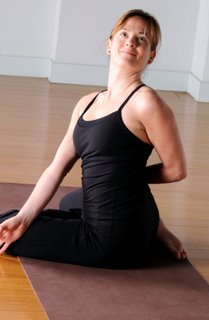 calm your mind with a mindfulness practice Calm Your Mind
Most stress-reduction techniques will help relieve moderate anxiety, says Edmund J. Bourne, Ph.D., a psychologist practicing in Hawaii and California and the author of Natural Relief for Anxiety (New Harbinger Publications, 2004). This can include abdominal breathing, yoga, tai chi, guided visualizations, or even just taking a break two or three times every day to relax, take a walk, or imagine yourself in a peaceful place. Set your Zen Meditation Timer anyplace or anytime for just 5 minutes a day so that you can calm your mind.
Mindfulness-based meditation, which has proved especially helpful in reducing anxiety, is now being taught in many hospitals and health centers across the country. Studies have found that, among other benefits, it can lower breathing rate, reduce levels of the stress hormone cortisol, and increase activity in the left frontal area of the brain, which is associated with a positive mental state and lowered anxiety levels. In fact, a recent Canadian study of cancer patients who participated in a mindfulness-based stress-reduction program found that levels of cortisol and pro-inflammatory chemicals continued to drop for six months to a year afterward.
Mindfulness practice also helps you notice your thoughts and feelings without judging them. “Mindfulness means accepting whatever you may notice around you and not trying to analyze it,” Duke University’s Brantley says.
After she left New York for North Carolina, Miller discovered the Duke Mindfulness program and found it to be invaluable. She attended group sessions and learned how to practice the meditations. The time she spent paying attention to her breathing or visualizing something peaceful improved her concentration at work and allowed her to reduce her dose of anti-anxiety medication.
The basics of the meditation (listening to your breath or paying specific attention to various parts of your body) are simple and can be learned from books—such as Full Catastrophe Living (Delta, 1990) and Wherever You Go, There You Are: Mindfulness Meditation in Everyday Life (Hyperion, 2005), both by Jon Kabat-Zinn, Ph.D., founding director of the Stress Reduction Clinic at the University of Massachusetts Memorial Medical Center. “The important thing is to make mindful practice a part of your life so you’ll be prepared when a stressful situation arises,” Brantley says.
Our Zen Timepiece’s acoustic 6-inch brass bowl-gong Meditation Timer & Clock is the world’s ultimate alarm clock, practice timer, and “mindfulness bell.”
adapted from Natural Solutions Magazine by Ben Kallen
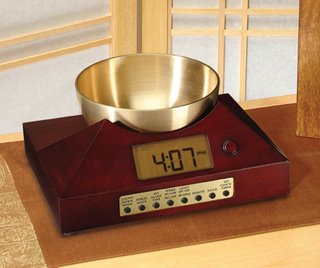 Zen Timepiece with Brass Singing Bowl, a Meditation timer to Calm your Mind Now & Zen’s Bowl-Gong Timer Store
1638 Pearl Street
Boulder, CO 80302
(800) 779-6383
Posted in Bamboo Chime Clocks, Chime Alarm Clocks, intention, Meditation Timers, Meditation Tools, mindfulness practice, yoga, Yoga Timer, Yoga Timers by Now & Zen, Zen Timers
 meditating makes you happier A few years back, the notion that meditation could bring bliss was something only a swami might swallow. Today it’s an idea that rings true to the ever-increasing numbers of people—from Madonna and Tiger Woods to thousands of ordinary Janes and Joes—who are making meditation a part of their everyday lives.
For years, studies have suggested that meditating can ease chronic pain, lower blood pressure, and reduce anxiety. But University of Wisconsin researchers recently broke new ground, uncovering physical evidence that it may actually make us happier.
A group of stressed-out employees at a biotech company was taught mindfulness meditation and was asked to meditate at home for an hour a day, six days a week, for eight weeks. The researchers measured electrical activity in the volunteers’ brains at the beginning and end of the experiment, and again four months later.
Those who meditated had more activity in the area of their brains linked to positive emotions. “These people weren’t meditating for thousands of hours like monks do,” says Saki Santorelli, executive director of the Center for Mindfulness at the University of Massachusetts Medical School in Worcester and one of the study’s coauthors. “The study suggests that everyday people are capable of altering their brain function in a positive direction.”
The next step on the research agenda, says Santorelli, is to better define and measure just what mindfulness is, so as to understand more about how it affects the mind and body. Scientists are also looking at how meditation might help some serious conditions, including prostate cancer, asthma, and menopausal symptoms.
What you can do: All it takes to reset your stress-o-meter is ten minutes a day of quiet. To start, set a chime timer (Now & Zen $199.95), sit comfortably, and soften your gaze. Since your breath is always with you, it’s a natural place to focus your attention. Don’t get wrapped up in controlling it; instead, just observe it. Each time your attention wanders, gently bring it back to the steady flow of air in and out of your lungs. If it helps to count the breaths, go for it. If not, just focus on breathing. Believe us—you’ll be healthier and happier.
adapted from Natural Solutions Magazine, January 2005 by Catherine Guthrie
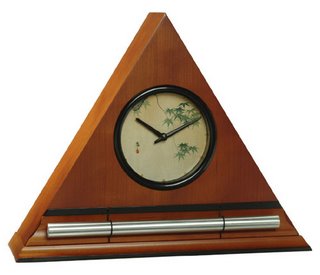 Chime Alarm Clock & Meditation Timers - Progressive Wake-Up Clock with Natural Acoustic Chime Now & Zen’s Clock & Timer Shop
1638 Pearl Sreet
Boulder, CO 80302
(800) 779-6383
Posted in Bamboo Chime Clocks, intention, Meditation Timers, Meditation Tools, mindfulness practice, Well-being, yoga, Zen Timers
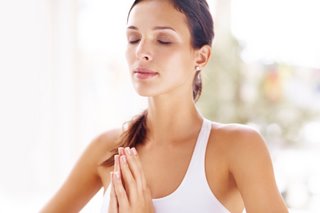 yoga and menopausal hormones Menopausal hormone shifts can rearrange your body and mind in unnerving ways. Let yoga bring you back into balance.
Clients at Kay Lee’s hair salon in Studio City, California, have gotten used to seeing its owner standing on her hands in a corner of the room. Lee, who’s 51, has been practicing yoga since she was in her early 20s. But she began a more dedicated practice about six years ago, when she realized she needed help managing the symptoms of perimenopause. “I was around lots of older women at the salon, and we would all talk about the changes we were going through,” she says. “Watching them go through their menopause, I realized I needed to find a good way to cope with it.”
Like many other women, Lee suspected that menopause might bring unpleasant symptoms. But when, in her 40s, she began experiencing perimenopause—a constellation of premenopausal changes that often includes hot flashes, insomnia, anxiety, irregular periods, heavy bleeding, forgetfulness, and fatigue—she discovered that she was unprepared.
For Lee, the symptoms that hit hardest were irritability and mood swings. She’d grown accustomed to juggling midlife responsibilities: running her business and household, tending to her marriage, raising two children. But her emotions sometimes flared out of control as she moved into perimenopause. The worst episodes occurred during her two-hour freeway commute from her home in Ojai, California, to the salon, and back again—a drive that grew more frustrating the deeper into perimenopause she got. “Road rage,” she says ruefully. “I would have a lot of road rage.”
Between the aggression, sleepless nights, and hot flashes, Lee decided she needed help. She knew women from the salon who were using hormone therapy, typically a combination of the female hormones estrogen and progesterone, but Lee wanted a more natural approach. She had taken classes sporadically in the past with Ojai yoga teacher Suza Francina, author of Yoga and the Wisdom of Menopause. Now that Lee needed help with the menopausal transition, she started going to Francina’s classes two to three times a week. She also began taking breaks during her busy workday to spend at least a few minutes doing yoga.
Fog-free zone
After several weeks of regular practice, Lee felt much better: Her moods stabilized, and her thinking became sharper. Even her PMS symptoms improved. Longtime yogis, of course, know that the practice can bring benefits like calmness, mental clarity, strength, and focus to people of any age. But for women experiencing the physical, mental, and emotional throes of the menopausal years, yoga’s gifts are particularly welcome.
“Menopause is like going through puberty, only in reverse,” Francina says. “By replenishing energy and soothing the nervous system, yoga goes to the root of a wide range of symptoms,” she says. Yoga teachers like Francina aren’t the only people who think that yoga can help. Because hormone therapy can raise the risk of heart disease, stroke, blood clots, and breast cancer, medical researchers have been searching for gentler ways to ease women through the menopausal transition. Although the research is still in its early stages, several studies have pointed to important ways that yoga can make a difference.
In 2005 Beth Cohen, an internist at both the University of California, San Francisco, and San Francisco VA Medical Center, studied the effects of yoga on hot flashes in a small pilot study of 14 women. The women in the study took part in a weekly 90-minute yoga class designed around eight restorative poses. They also practiced for one hour at home three days a week. After eight weeks, the frequency of the women’s hot flashes decreased by 30 percent and their severity diminished by 34 percent. Cohen suspects that the results may be due to yoga’s ability to calm the sympathetic nervous system, although she can’t yet be certain, because researchers don’t fully understand what causes hot flashes.
Cohen says that the study also revealed some unexpected findings, such as improved sleep among the participants. But since the study didn’t include a control group, it’s hard to say whether some of the response can’t be chalked up to the placebo effect. Last year, however, researchers in Bangalore, India, examined how yoga affected menopausal symptoms in a larger group of 120 women, this time with a comparison group. Half the women took yoga classes five days a week for an hour a day, while the others did supervised gentle exercise. After eight weeks, the yoga group had substantially fewer menopausal symptoms—hot flashes, memory problems, and sleep disturbances—as well as lower scores on a measure of perceived stress. There’s also evidence that yoga can do more than just ease bothersome symptoms. Kim Innes, assistant professor at the University of Virginia’s Center for the Study of Complementary and Alternative Therapies, reviewed the medical literature about ways that yoga (and other mind-body practices, including tai chi) may affect the physiological and neuropsychological processes that contribute to the increase in heart disease risk for postmenopausal women.
The hormonal changes that occur during menopause, particularly the sharp drop in estrogen, can lead to numerous health changes that make women much more vulnerable to heart disease and other chronic conditions. For instance, menopause itself is associated with a rise in insulin resistance and other adverse changes, including high blood pressure. Insulin resistance is a precursor to diabetes, in which the body becomes less sensitive to insulin, in turn causing blood-sugar levels to rise. In addition the menopausal transition is associated with increased activation of the sympathetic nervous system and related deterioration in both mood and sleep. All of these factors are interrelated, and all raise the risk for heart disease.
Yoga, Innes says, has been shown to counter these risk factors. “I wasn’t expecting to see such a widespread effect on so many parameters,” she says. “But the more you look, the more you see that so many of these are related to stress. And the thing that’s startling is how quickly these beneficial changes can occur, even over the course of six weeks or less.”
Restoratives to the Rescue
No single sequence will provide surefire relief for every woman, says Elise Browning Miller, an Iyengar Yoga teacher in Palo Alto, California, who teaches workshops on yoga for menopause. Browning Miller and other teachers agree on a few general principles for practicing during menopause.
Women who are experiencing a lot of emotional turmoil may find standing poses like Prasarita Padottanasana (Wide-Legged Standing Forward Bend) to be grounding and stabilizing, says Browning Miller. If heavy bleeding is a problem, inversions such as Salamba Sarvangasana (Supported Shoulderstand) can help reduce bleeding, she says.
For postmenopausal women who want to maintain strong bones and prevent the wrist fractures common among this group, Miller recommends practicing asanas that put weight on the hands and forearms. These include poses such as a supported version of Adho Mukha Svanasana (Downward-Facing Dog Pose), using a strap around the elbows or putting the forearms on the floor. Resting the head on the floor or on a block during the pose can also help ease emotional upset.
But for many women during this time, restorative poses are the most crucial asanas of all. “When your body is going through changes, you need more rest,” Francina says. “No aspect of yoga is more important during this time than to take time every day to practice at least one restorative pose. This is a time for a peaceful, deep approach, with plenty of props so you can enjoy staying in poses longer.”
Life Support
As for how often to practice, the consensus is at least twice a week: “Enough that you let it spill into your life,” Miller says. “There’s something about twice a week that has a multiplicative effect.”
Lee says that she can’t imagine her life these days without yoga. She practices at the beginning or end of her day for at least 20 minutes, focusing on restorative poses. And she continues to attend classes at Francina’s studio two or three days a week. The benefits go beyond the physical. Because her mother died at 52, Lee hasn’t had an up-close role model to show her how to move gracefully into the next stage of her life. The women in her yoga classes, some of whom are in their 80s, have helped to fill that void. “Yoga gave me a support group of women who are my elders,” Lee says. “When we practice together, I feel really supported.”
At Lee’s salon, she says, the topics of perimenopause and menopause come up all the time. When women come in for a haircut but wind up telling Lee that they’re fatigued or having mood swings, she passes on yoga tips that might help them feel better. In addition to having her mat at the salon, she also keeps a block, a strap, and a bolster on hand. “I’ve shown so many clients Viparita Karani,” she says. “They initially come for a beauty treatment. I try to remind them that beauty comes from inner balance and health.”
At Rest in Transition
Make restorative poses the core of your practice during the menopausal transition, says yoga teacher and author Suza Francina. “I call these the essential poses for crossing the menopausal bridge. They will carry you to the next phase of your life.” Francina recommends staying in the first two poses for 10 minutes or longer, and the third for 5 minutes or longer.
Supta Baddha Konasana (Reclining Bound Angle Pose), supported
Sit on your mat in front of a bolster placed lengthwise behind you. Loop a strap behind your back at your sacrum. Bring it forward around your hips and over your shins, and secure it under your feet so that it encircles the lower part of your body. Place the soles of your feet together and put a folded blanket or block beneath each of your outer thighs. Lie back with your spine centered on the bolster and with your arms out to the sides, palms up. |
 |
Setu Bandha Sarvangasana (Bridge Pose), supported
Place a bolster or two folded blankets on your mat, and lie back over them so that they support your back rib cage but allow your upper back and shoulders to reach toward the floor. Place the soles of your feet together, cross your shins, or bend the knees and keep feet flat on the floor. More-experienced yogis can practice with the legs straight and the feet on a block. Let your arms rest out to the sides or stretch them overhead with elbows bent and palms facing up. |
 |
Viparita Karani (Legs-up-the-Wall Pose), supported
Place a bolster or two folded blankets about six inches away from the wall (the exact distance depends on your leg flexibility and comfort). Sit sideways on the bolster, with the side of your hip touching the wall. With the bolster under your bottom, lower yourself back and swivel around so that your torso is perpendicular to the wall and your legs are extended up it. Let your arms rest out to the sides, palms up. In the beginning, stay about 5 minutes, and gradually increase the time to 10 minutes or longer. |
 |
adapted from Yoga Journal by Katherine Griffin, a former editor at Yoga Journal, is a San Francisco Bay Area writer.
Our Zen Timepiece’s acoustic 6-inch brass bowl-gong clock is the world’s ultimate alarm clock, practice timer, and “mindfulness bell.” The Singing Bowl Gently reminds you to change position when practicing yoga each day.
This unique “Zen Clock” features a long-resonating acoustic chime that brings the meditation or yoga session to a gradual close, preserving the environment of stillness while also acting as an effective time signal.
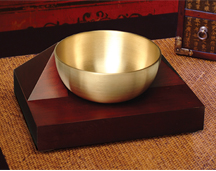 Yoga Timer with Singing Bowl - Now & Zen, Inc.
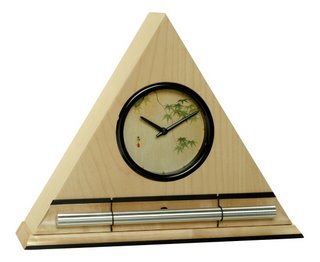 Zen Chime Alarm Clock and Yoga Timer Now & Zen’s Yoga Timer Shop
1638 Pearl Street
Boulder, CO 80302
(800) 779-6383
Posted in yoga, Yoga Timer, Yoga Timers by Now & Zen
 yoga and knee issues Yoga can be a source of knee pain or the ideal therapy. Here’s a primer on keeping the joint healthy on and off the mat.
The chorus of pops emanating from Kyle Ray’s knee was his first clue that his body wasn’t happy in Padmasana (Lotus Pose). It was the end of a relaxing yoga class in Louisville, Kentucky, and the teacher had instructed everyone to assume a seated position for some chanting. Sure, Ray’s knees had acted up on occasion, but he’d gotten himself into Lotus before and was confident he could do it again. He slowly nestled his left ankle into the crook of his hip. Then, grabbing his right calf, he used his arm strength to muscle the top leg into position.
“The noise was awful,” says Ray, 31. A second later, a quick, sharp pain shot through his knee. He gingerly unfolded his legs. After class, it was all he could do to hobble home and place an ice pack on the swelling joint. It took six months for him to be able to walk without pain. Although his knee pain did subside, Ray still frets about the stability of his knees and generally avoids knee-taxing postures like Virasana (Hero Pose).
There’s no doubt that yoga asks much of the knees. Done properly, asana practice can shore them up to prevent injuries and slow the progression of some musculoskeletal diseases, but practiced without mindfulness, it spells disaster for these joints. Clearly, there are just as many people who credit yoga with rehabilitating weak knees as there are determined yogis like Ray, who will themselves into complex poses and pay a big price for overdoing it. But in poses like Supta Virasana (Reclining Hero Pose), in which the knees can feel pushed to the edge, it’s sometimes hard to know if you’re helping or hurting them. So what’s a yoga practitioner who’s concerned about protecting the knees to do? Nothing can replace the guidance of an experienced teacher, but certain principles can guide you into a safe, beneficial practice.
Weak in the Knees
The knee marks the meeting place of three bones: the shinbone (tibia), the thighbone (femur), and the kneecap (patella). Two crescent-shaped pads of cartilage, each called a meniscus, sit between the shinbone and the thighbone and act as cushions between the bones and shock absorbers during movement. Two sets of ligaments—the cruciates and the collaterals—strap all three bones in place. The cruciates crisscross below the kneecap; the collaterals run alongside the outside of the kneecap. The leg’s substantial muscles help these ligaments keep the bones properly aligned.
Unfortunately, the knee’s mechanics are better suited to chasing animals for dinner than to sliding into second base, says Stephen Messier, professor of health and exercise science at Wake Forest University in Winston-Salem, North Carolina. “We weren’t designed to do the things we do with our bodies nowadays,” he explains. “The knee’s engineering isn’t the greatest.”
And it shows: Every year, nearly 11 million Americans complain to doctors about knee pain. Orthopedic surgeons operate more often on the knees than on any other body part; they performed more than 1.2 million such surgeries in 1996 alone (the latest year for which figures were kept).
Roughly 21 million Americans have osteoarthritis of the knee—a degenerative disease in which the cartilage gradually decays and fails to provide the shock-absorbent padding that cushions the bones. Many older people suffer from this painful arthritic condition; age is considered a risk factor, as are obesity and knee injuries.
For years, experts have touted leg strength as one of the best ways to ward off knee problems, including osteoarthritis. This is because the knee’s key muscular supports are the hamstrings—which run from the base of the pelvis down the back of the leg to just below the knee—and the quadriceps, the four muscles on the front of the thigh that (among other things) extend a bent leg. At the first sign of the disease, doctors often instruct their patients to build muscle tone and develop flexibility in the legs so as to delay cartilage deterioration and subdue pain.
But the findings of a study published in the Annals of Internal Medicine in April 2003 indicate that in some cases, building leg strength doesn’t slow the disease’s progression—in fact, it hastens it. Researchers tested 230 volunteers with osteoarthritis of the knee for quadriceps strength and knee alignment, and then retested them 18 months later. The results surprised the medical community: Many volunteers with strong quads also showed rapid cartilage deterioration. But there was a catch—many of those who had strong quads and experienced a rapid progression of the disease also had misaligned kneecaps, a small but significant impairment that intensifies pressure on the cartilage.
You don’t even have to suffer from osteoarthritis for misalignment to cause problems in your knees. In fact, Messier says, “misalignment can cause injury and osteoarthritis over long periods of time, especially if you have stronger muscles that are directing the forces improperly.” If the muscular contraction between the two sides of the knee isn’t balanced, the knee rotates as it bends, which makes the joint pull toward the stronger muscle. Over time, this wears down one meniscus faster than the other and eventually damages the bone the cartilage protects.
While the study points to the problems created by building uneven leg strength, Messier is concerned that its findings will be misinterpreted. “The last thing we want to do is discourage people from getting stronger,” he says. What the study actually highlights is the importance of evenly building the leg muscles to keep the joint properly aligned—a task for which yoga is perfect.
One of the Best Antidotes
Whether you’re out to guard against injury and disease or regain strength and flexibility after an injury, yoga can be a superb antidote to knee trouble. “Yoga is fantastic for the knees, especially for people recovering from damaged ligaments,” says Michael Salveson, who has worked on dozens of yoga students during his 33-year tenure as a Rolfer in Berkeley, California. “Yoga increases the stabilizing action of the leg’s big muscles.” When the inner and outer quadriceps are equally strong, he adds, they exert an equal pull on the ligaments, which keeps the kneecap in alignment.
Sandy Blaine is a good example. As a teenager, she enjoyed dance and gymnastics. By her early 20s, she’d dislocated both knees on several occasions. Searching for a low-impact way to stabilize her joints, Blaine tried Iyengar Yoga when she was 26. She was initially surprised by the discipline’s difficulty, yet what impressed her more was how remarkably good she felt afterward. Within six months of attending two to three Iyengar classes a week, Blaine found that her knee pain had vanished. Today, at 42, she still sounds as if she can’t believe her knees are pain-free, calling the result “an absolute miracle.”
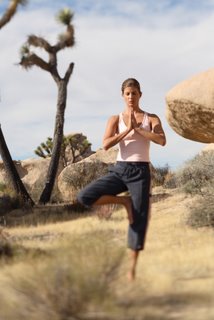 yoga timers and meditation chime timers - Boulder, CO “I was looking at a lifetime of being very constrained,” says Blaine, who is now an instructor at the Yoga Room in Berkeley and regularly conducts workshops on yoga and knee health. Regaining healthy knees “was an incredible relief,” she adds.
To evenly engage the leg muscles, Blaine does Utkatasana (Chair Pose) with her back against a wall. She focuses on lifting her toes and pressing down evenly through all four corners of her feet. Otherwise, the outer quadriceps do all the work and old patterns are reinforced, she explains. Another way Blaine works on equalizing muscle use is by balancing on one foot with her eyes closed. “Without the orientation of the eyes, your feet and ankles have to find a true alignment to come into balance,” she says.
Robust ligaments are also essential for healthy knees. Less elastic than muscles and tendons, ligaments can give a little and bounce back to their original shape. But trouble brews when they stretch too far: Like a rubber band that’s lost its snap, they lose their shape, leaving the joint loose. Salveson, who is also an instructor at the Rolf Institute in Boulder, Colorado, compares the microtears a ligament sustains in an injury to frays in a rope; when a few strands snap, the rope lengthens. After a torn ligament heals, one side may always be a little longer and, therefore, more susceptible to reinjury. “You can make it stronger,” he says, “but you can’t make it shorter.”
Knee experts are actually divided about whether ligaments can be strengthened. “We know that you can increase muscle and bone strength,” says Angela Smith, M.D., a clinical associate professor of orthopedic surgery at the University of Pennsylvania School of Medicine. “Intuitively, we think that the other structures of the knee—ligaments and tendons—get stronger as well.”
Blane, for one, is convinced that years of Iyengar Yoga have toned her knee ligaments. “At first, my feet, ankles, and knees were so weak that the standing poses were sheer torture,” she says. “My ligaments and muscles were strong on the outer leg and weak on the inner leg, which pulled the knee joint to the side. Yoga helped me strengthen those weak areas. It taught me how not to go with the path of least resistance.” Her ligaments used to be so weak that she once dislocated her kneecap tripping on a curb. But since committing herself to a regular yoga practice, she hasn’t suffered a knee injury in years.
2 Start with your feet. Proper alignment through the feet is the key to building strength evenly in the ligaments on both sides of the knee; when all the ligaments are equally strong, the kneecap glides effortlessly up and down and the cartilage doesn’t get worn down. Separate your toes and press actively through the four corners of your feet in every pose, even inversions. If your feet are out of alignment, your knees are going to suffer.
3 Keep your knees in line. When moving into deep knee bends, such as Virabhadrasana II (Warrior Pose II) and Parsvakonasana (Side Angle Pose), first align your bent knee over your ankle, then draw your kneecap in line with your second toe. Maintain awareness in your back foot, pressing down evenly, while lifting up from the arch of your front foot. “If you let the arch drop, the knee falls inside the big toe, and you’re set up to suffer a number of different kinds of overuse and acute knee injuries,” says Angela Smith, a professor of orthopedic surgery.
4 Tune in to subtle signals. “Oftentimes, the knees don’t give immediate feedback,” explains Iyengar teacher Joni Yecalsik. “Only later do you realize you’ve gone too far. When it comes to the knees, the sensation that would normally proceed the red flag is the red flag.” If you feel achiness when you come out of a bent-knee pose, you may have worked too hard.
5 Build strength by balancing. Balancing poses, especially those that require moving through a bent standing leg, such as Garudasana (Eagle Pose), are especially beneficial. “Very dynamic balancing protects the knee against future injury by training the functional alignment, not just working the muscle,” Smith says.
6 Be prop-friendly. When it comes to seated asanas, nothing makes a tight knee happier than a bounty of props. In Virasana (Hero Pose), try raising your seat with blankets or a block. Anytime the knees are deeply bent, such as in Balasana (Child’s Pose) or Marichyasana III (Pose Dedicated to the Sage Marichi III), pressure can be relieved by placing a rolled-up washcloth as far into the knee pit as possible before bending the joint.
7 Warm up with hip openers. “If your big joints aren’t open, your small joints will always take the stress,” yoga instructor Sandy Blaine says. “Many people hurt their knees doing Lotus when their hips aren’t ready.” She recommends warming up with hip stretches like Baddha Konasana (Bound Angle Pose) and Gomukhasana (Cow Face Pose).
—C.G.
adapted from Yoga Journal by Catherine Guthrie, a writer and yoga teacher in Louisville, Kentucky, and a regular contributor to Yoga Journal.
Using a kitchen timer or beeper watch is less than ideal to use in your yoga practice. And it was with these considerations in mind that we designed our digital Zen Alarm Clock and yoga practice timer. This unique “Zen Clock” features a long-resonating acoustic chime that brings the meditation session or yoga practice to a gradual close, preserving the environment of stillness while also acting as an effective time signal. The Digital Zen Clock can be programmed to chime at the end of the meditation session or periodically throughout the session as a kind of sonic yantra. The beauty and functionality of the Zen Clock/Timer makes it a meditation tool that can actually help you “make time” for meditation in your life.
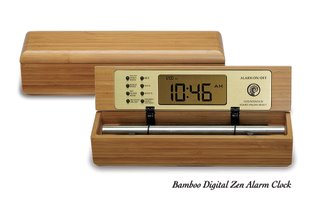 Yoga Timer and Clock by The Maker's of The Zen Alarm Clock - Boulder, CO Our Chime Yoga Timer serves as a countdown and interval timer for yoga, meditation, bodywork, etc.; and it can also be set to chime on the hour as a tool for “mindfulness.”
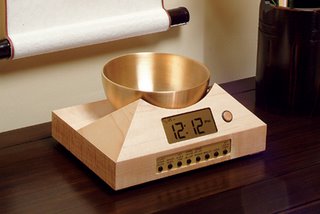 yoga and meditation timers with Tibetan Bowl Gong Now & Zen’s Clock and Yoga Timer Shop
1638 Pearl Street
Boulder, CO 80302
(800) 779-6383
Posted in yoga, Yoga Timer, Yoga Timers by Now & Zen
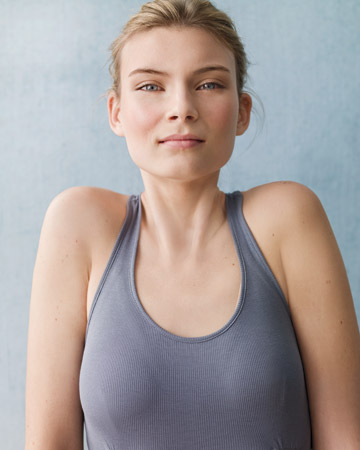 Stretch the Stress Out What it does:
Gets rid of shoulder and neck tension, helps lift the shoulder blades and collar bones up off the rib cage for better posture.
How to do it: Stand or sit with your spine tall. Inhale, then exhale deeply while making an “s” sound. As you inhale for a count of three, slowly lift your shoulders up toward your ears. Exhale with an “s” sound to a count of three as you roll your shoulders back, and finally lower them down as you inhale to a count of three. Repeat five times.
adapted from Body + Soul Magazine
Use our unique “Zen Clock” which functions as a Yoga Timer. It features a long-resonating acoustic chime that brings your meditation or yoga session to a gradual close, preserving the environment of stillness while also acting as an effective time signal. Our Yoga Timer & Clock can be programmed to chime at the end of the meditation or yoga session or periodically throughout the session as a kind of sonic yantra. The beauty and functionality of the Zen Clock/Timer makes it a meditation tool that can actually help you “make time” for meditation in your life. Bring yourself back to balance.
 Digital Yoga Timers with Gentle Chime Now & Zen– The Yoga Timer Store
1638 Pearl Street
Boulder, CO 80302
(800) 779-6383
Posted in Well-being, yoga, Yoga Timer, Yoga Timers by Now & Zen

Partner yoga can help you deepen both your poses and your relationships. “Doing yoga with a partner makes many poses more accessible, comfortable, and therapeutic,” says Mary Aranas, who teaches at Pure Yoga and leads partner yoga workshops around the country. “By holding onto another person, you can balance better than you could on your own, move into poses more deeply, and hold them longer, which increases strengthening and stretching.” Working in tandem also improves communication. All you need is a spouse, a friend, or another willing partner — and neither of you has to be overly fit or flexible. Aranas chose the following poses, including tension-busting twists and restorative stretches, for their simplicity.
Benefits: Increases lung capacity, stretches the torso, and lifts the spirit.
How to Do It: Stand facing each other, feet hip-width apart so that you can comfortably hold each other’s forearms with your arms bent. Inhale and lift the chest, then exhale and drop head gently back, straightening arms. Hold the pose for 2 to 3 breaths. Inhale, and return to standing.
adapted from www.wholeliving.com
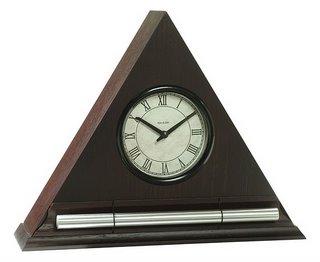 partner yoga Now & Zen, Inc.
1638 Pearl St.
Boulder, CO 80302
(800) 779-6383
Posted in yoga, Yoga Timer, Yoga Timers by Now & Zen
 yoga to reduce blood pressure By consciously shifting your emotional state, you can help lower your blood pressure naturally, without medication.
By Rollin McCraty
A heart rate changes with every beat, even when a person is sitting still. The heart rate variability is affected by both the sympathetic nervous system—the signal to gear up for a stressful situation—and the parasympathetic nervous system, which tells the body to relax. When a person is angry or upset, the heart receives mixed messages, causing a jerky heart pattern. This extra wear-and-tear causes blood pressure to rise.
Luckily, when the emotional state is shifted, the heart rate can be physically affected. In turn, the entire physiological system works more efficiently. One popular stress buster is a technique called Freeze Frame. Begin by recognizing the stressful feeling and freeze-frame it. Then shift the focus away from the racing mind or disturbed emotions. Breathe through the heart area to help focus the energy for 10 seconds or more. Recall a positive feeling or time and attempt to re-experience it. Then, ask the heart what would be a more efficient response to the situation—one that will minimize future stress. Using this one-minute practice regularly can help keep blood pressure at safe levels.
Rollin McCraty, M.A., director of research at the Institute of HeartMath in Boulder Creek, CA. The HeartMath Solution (HarperSanFrancisco, 1999) explains the research behind the Freeze Frame technique.
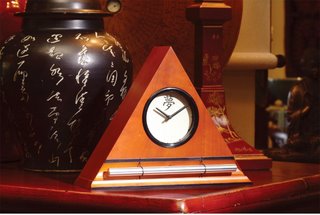 yoga timers and chime alarm clocks
Now & Zen
1638 Pearl St.
Boulder, CO 80302
(800) 779-6383
adapted from Yoga Journal.com
Posted in yoga, Yoga Timer, Yoga Timers by Now & Zen
 Yoga injuries These herbs help heal and prevent common yoga injuries.
By James Bailey, L.Ac., M.P.H.
In my early 30s I began to experience a greater sensitivity in my joints during my yoga practice, which culminated in three injuries in one year. Being an herbalist and a devoted yoga practitioner, naturally I explored using herbs both internally and topically. After some experimenting, I found I could minimize cycles of stiffness and pain after class and even prevent reinjury.
Injuries caused by a hatha yoga practice are usually minor and limited to simple ligament sprains and muscle strains, with the occasional slip, fall, or forced adjustment. The most common injuries are caused by repetitive isometric strain or overstretching and occur at the wrists, shoulders, neck, along the spine, and at the sacroiliac joint, hamstrings, and knees. If not addressed, these minor setbacks can have a long-term impact on the balance of alignment within the practice. Some yogis even bring ailments to the mat, which can also have lifelong effects upon range of motion, breathing, supply of energy, and quality of meditation.
There are two botanical approaches to injury care. In the trauma phase, when an injury first occurs, herbs should be used both internally and topically to relieve acute pain and inflammation. Then in the recovery phase introduce herbs to nourish and strengthen the joints and soft tissues. When an injury first occurs, simple strains and sprains require herbal compounds that improve the circulation of prana (life force) and blood in and around the injury. Even minor trauma can have the undesired effect of reduced local circulation, pain, swelling, and inflammation. Topical applications target the traumatized area directly. The active constituents of the topical herbs are absorbed through the skin for a more immediate and targeted effect.
Among a large class of generic analgesic and anti-inflammatory substances, a few Ayurvedicclassics stand out. Salai guggul, Kapitthaparni, and Bola are three related plant sap resins used internally and topically to reduce pain, strengthen bones and joints, and cleanse the blood of toxins that accumulate around injury sites.
White willow is a Native American remedy and natural source of salicylic acid, the forerunner of aspirin, but without the blood-thinning and stomach-irritating side effects. It also improves mobility in sore or creaky joints. Notoginseng, a relative of Panax ginseng, is known for its analgesic effects on injuries. It is used throughout Asia to improve circulation and support the adrenal glands in the production of inflammation-reducing corticosteroids.
Once the pain subsides, it is important to introduce herbs that rejuvenate and strengthen joints and soft tissues. These herbs do not remedy the acute, aggravated phase of the injury but instead strengthen the integrity of the tissues and support a more complete recovery. They also are ideal for yoga practitioners who have ongoing vulnerabilities in the joints.
For the later stage of injury recovery, use herbs that supply a natural plant source of collagen and silica, both important for rebuilding soft tissue. Eucommia, a renewable tree bark, supplies plant collagen directly to the damaged area and also can be safely used as a long-term joint supplement for both injury recovery and prevention. Eucommia is traditionally believed to strengthen a weak lower back and knees; it also protects the lumbar spine and sacrum in backbending and hip-opening postures, and the knees in postures like Padmasana (Lotus Pose) and Virasana (Hero Pose). Horsetail, a reedlike plant, contains large amounts of natural silica, which speeds the repair and regeneration of connective tissue, thus improving its strength and elasticity.
but without the blood-thinning and stomach-irritating side effects. It also improves mobility in sore or creaky joints. Notoginseng, a relative of Panax ginseng, is known for its analgesic effects on injuries. It is used throughout Asia to improve circulation and support the adrenal glands in the production of inflammation-reducing corticosteroids.
Once the pain subsides, it is important to introduce herbs that rejuvenate and strengthen joints and soft tissues. These herbs do not remedy the acute, aggravated phase of the injury but instead strengthen the integrity of the tissues and support a more complete recovery. They also are ideal remedies is meant to complement the conventional wisdom of resting and icing. Of course, for serious injuries or those that do not improve within 72 hours, a professional health-care provider should be consulted.
James Bailey, L.Ac., M.P.H., Herbalist AHG, practices Ayurveda, Oriental Medicine, acupuncture, herbal medicine, and vinyasa yoga in Santa Monica, California.
 timers for yoga Now & Zen, Inc.
1638 Pearl St.
Boulder, CO 80302
(800) 779-6383
adapted from Yoga Journal.com
Posted in yoga, Yoga Timer, Yoga Timers by Now & Zen
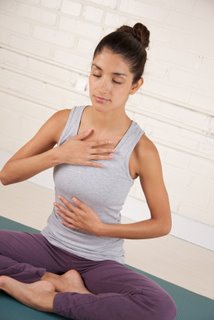 slow down to detox By Hillari Dowdle
Reducing stress and mental overactivity is perhaps the most important element of a successful detox plan, Blossom says. Habitual rushing, multitasking, and dealing with information overloads are the trifecta of American toxicity. And like an overtaxed liver, an overtaxed mind and nervous system can lead to a host of health issues, including adrenal fatigue, insomnia, irregular menstrual cycles, indigestion, and unwelcome weight gain.
The first step in reducing the toxicity created by an overloaded life? Slowing down. During the next seven days, adjust your schedule so you have time to prepare and eat your meals in a relaxed manner, practice daily yoga, and take regular meditation breaks. By saying “no” to the outside influences that pull your attention and energy in so many directions—and replacing them with healthier choices—you’ll begin to tune in to your body’s natural rhythms and detox more effectively.
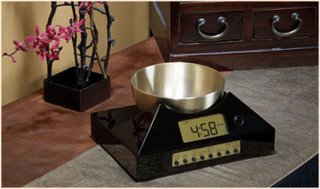 Zen Timepiece, a timer with bowl gong for slowing down adapted from Yoga Journal.com
Now & Zen, Inc.
1638 Pearl St.
Boulder, CO 80302
(800) 779-6383
Posted in yoga, Yoga Timer, Yoga Timers by Now & Zen
 cherry blossoms Odorless, tasteless flower essences are the basis of a popular stress-relieving treatment that dates back to the 1930s.
By Steffie Nelson
Bach’s Rescue Remedy, a popular stress-relieving treatment, has been helping people chill out for decades. But if you asked regular users what’s in it, most would get it wrong. It’s a blend of five flower essences, but like all remedies used in flower essence therapy, it contains no physical part of the flower.
Flower essences are odorless, tasteless infusions of flower blossoms. Originally developed in the 1930s by British physician Edward Bach, they’re designed to treat emotional imbalances caused by temporary troubles such as fear, anxiety, or panic, or by long-term problems with your love life or career. Bach crafted 38 remedies that bear his name and are still used; hundreds of other versions have been created by independent flower-essence makers all over the world. (They are especially popular in Cuba, where they’re covered by the national health care system.)
Practitioners of the therapy acknowledge that by the standards of Western medicine, it’s hard to see how something so diluted could have healing effects. But Richard Katz, founder of the Flower Essence Society, based in Nevada City, California, says a different paradigm applies: “Flower essence therapy is based on the idea that a human being is more than biochemistry. We have a soul and an energy field.” Katz says the essences work on a subtle level. “The vibrational quality of the flowers elicits different healing responses in the body,” he says, “just as the vibrations from different types of music will elicit different responses.”
Most essences work best in monthlong treatments, taken up to four times a day. Place them under your tongue or dilute them in a glass of water; dab them on the pulse points on your wrists or neck; or swirl them into your bath. Choosing the right essence is key, so find a practitioner who will take a detailed inventory of your emotional state, work life, and relationships. The Flower Essence Society (www.flowersociety.org) can provide referrals.
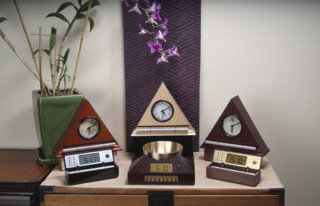 Now & Zen's Family of Products, Boulder, Colorado Now & Zen, Inc.
1638 Pearl St.
Boulder, CO 80302
(800) 779-6383
adapted from Yoga Journal.com
Posted in yoga, Yoga Timer, Yoga Timers by Now & Zen
« Previous Page — « Previous Entries
Next Entries » — Next Page »
|
|
|
|